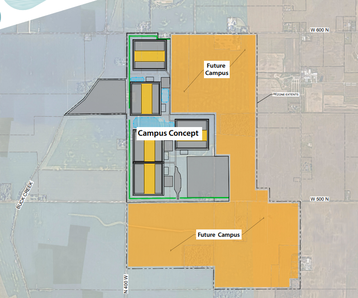Decision made in response to strong local opposition.
A land rezoning proposal for a potential data center in Buck Creek Township, Indiana, has been withdrawn amid local opposition.
The proposal was originally set to be heard on May 27 by the area planning commission, but the agenda, uploaded May 13, shows that it has been struck off.
The proposal, which would have rezoned a 775-acre plot of land around 3400 West 500 N in the township, was submitted by real estate firm Surge Development. A site plan suggests that the first phase could have seen five buildings and a substation developed.
Surge Development issued a statement explaining its decision, stating that “additional specificity and clear direction are needed to fully understand the potential impacts and benefits of development in this area.”
However, the company seems keen on moving forward with a different version of the project, focusing “[Surge’s] efforts on working directly with the specific users who have expressed interest in the site.”
It is unclear who these users are, but according to the Greenfield Reporter, a public information session held prior to the withdrawal indicated that there was some support for the project from the owners of some of the land. The development would have combined various land parcels belonging to different owners.
But many concerns were expressed about tax abatements, power grid demand, the effect on the rural environment and the local economy.
Opposition to the proposed development emerged after information emerged in early March. An orchard, located directly nearby, penned an open letter in late March rallying against the facility.
The end-user was never confirmed, but the ‘representative images’ in Surge Development’s preliminary plan consisted only of existing Google data centers.
Indiana has received much attention from data center operators. Just three days ago, another rezoning petition for a facility near the town of New Carlisle underwent its first reading. Large players like Google, Amazon, and Meta all have a presence in the region, and demand has led to the state projecting significant growth in peak load capacity.








